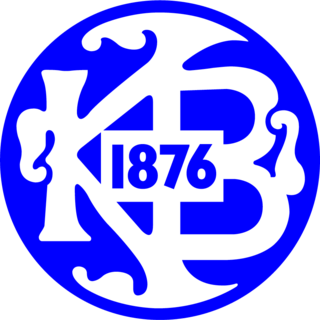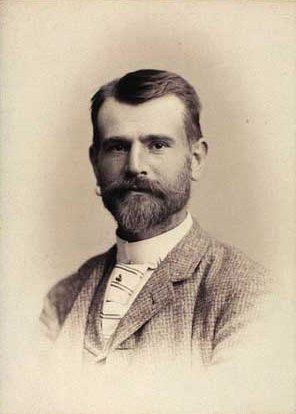
The krone is the official currency of Denmark, Greenland, and the Faroe Islands, introduced on 1 January 1875. Both the ISO code "DKK" and currency sign "kr." are in common use; the former precedes the value, the latter in some contexts follows it. The currency is sometimes referred to as the Danish crown in English, since krone literally means crown. Krone coins have been minted in Denmark since the 17th century.

The króna is the currency of the Faroe Islands. It is issued by Danmarks Nationalbank, the central bank of Denmark. It is not a separate currency, but is rather a local issue of banknotes denominated in the Danish krone, although Danish-issued coins are still used. Consequently, it does not have an ISO 4217 currency code and instead shares that of the Danish krone, DKK. This means that in the Faroe Islands, credit cards are charged in Danish kroner. The króna is subdivided into 100 oyru(r).

Kjøbenhavns Boldklub is a Danish professional multi-sports club based in Copenhagen. The club was founded on 26 April 1876 on the grassy fields in outer Copenhagen which later became Fælledparken. Tennis has been played since 1883. The club hosted, in 1921, one of the early tennis majors: the World Covered Court Championships, won by William Laurentz that year. Today, along with the sports already mentioned, the club also has facilities for badminton, swimming and pétanque.

The rigsdaler was the name of several currencies used in Denmark until 1875. The similarly named Reichsthaler, riksdaler and rijksdaalder were used in Germany and Austria-Hungary, Sweden and the Netherlands, respectively. These currencies were often anglicized as rix-dollar or rixdollar.
The Royal Veterinary and Agricultural University was a veterinary and agricultural science university in Denmark. It was founded in 1856 and operated until 2007, when it became a part of the University of Copenhagen. It had its headquarters in Frederiksberg, Copenhagen.

The Greenlandic krone was a planned currency for Greenland, plans of which were abandoned in 2009. The same name is often used for currency issued during Greenland's time as a Danish colony. The name krone is derived from the Danish krone, introduced in an 1873 currency reform that replaced Danish mark and skilling.

Hans Christian Harald Tegner, known as Hans Tegner, was a Danish artist and illustrator. He is primarily known for his illustrations of literary works by Hans Christian Andersen and Ludvig Holberg and for his work for the Bing & Grøndahl porcelain factory.

The Danish state bankruptcy of 1813 was a domestic economic crisis that began in January 1813 and had consequential effects until 1818. As Denmark-Norway struggled with the financial burden that the Napoleonic Wars had on the economy, the devaluation of the currency had negative effects on merchants, citizens and businesses alike.
The National Olympic Committee and Sports Confederation of Denmark is the National Olympic Committee representing Denmark.
Events from the year 1873 in Denmark.

Emil Axel Berg was a Danish architect. He received the Neuhausen Prize, C. F. Hansen Medal, and Eckersberg Medal, and was honored as a Knight of Order of the Dannebrog.

The Royal Mint of Denmark is a mint established by the Danish monarchy in the early 16th century, which currently by law is the only company allowed to mint the Danish currency (DKK). It is owned by the Danish State and administered as a subsidiary of the Danish Central Bank.

The Jennow House is a historic property located at Strandgade 12 in the Christianshavn neighbourhood of Copenhagen, Denmark. It takes its current name after Andreas Jennow, a businessman who owned it from 1949 to 1978. His company Andreas Jennow A/S was based in the building until 1988.

The Jens Lauritzen House is a Neoclassical property at Nytorv 7 in the Old Town of Copenhagen, Denmark. Home to the Association of Folk High Schools in Denmark, the building is now also known as Højskolernes Hus.
Ordrup Cemetery is a cemetery in Ordrup in the northern suburbs of Copenhagen, Denmark. It is the principal cemetery for the districts of Skovshoved, Ordrup, and Charlottenlund in the parishes of Ordrup and Skovshoved.

Signe Krogstrup is a Danish economist and one of the three governors of Danmarks Nationalbank, the Danish central bank. Previously she has worked for the Swiss National Bank and the International Monetary Fund.

The Sigvert Grubbe House is a Renaissance style townhouse situated at Strandgade 28 in the Chrstianshavn neighborhood of central Copenhagen, Denmark. The property comprises the building at Wildersgade 41 on the other side of the block as well as a half-timbered building separating two central courtyards from each other. The apartment on the first floor features a number of murals attributed to Nicolai Abildgaard. The entire complex was listed in the Danish registry of protected buildings and places in 1918. It takes its name after its first owner, Sigbert Grubbe, a favourite of ChristianIV. It was later owned by Jacob Benjamin Italiaender, a Sphardi Jew, who established a tobacco manufactory as well as a private sunagogue in the yard. The painter Peder Severin Krøyer grew up in the building in the 1860s.



















